|
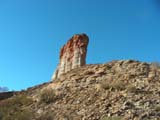
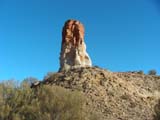
The Scottish explorer John MacDouall Stuart arrived
at this prominent landmark on 6 April 1860.
He named it Chambers Pillar to honour his friend and financial supporter, James
Chambers. Stuart was on his first bold attempt to cross the unknown land
that separated South Australia from the north coast.
It wasn't until his third expedition in 1862 that he was successful.
This showed the way for the construction of the telegraph line across the continent,
which in turn brought white settlement to central Australia.
The country here has changed very little since Stuart's visit.
If you look out over the sandhills you can imagine what it must have been like
struggling through this country on horseback, and not knowing where or when
you might find the next waterhole.
Stuart, who endured extreme hardship on his expeditions, collapsed while returning
to Adelaide from the north coast in 1862.
He became so ill that he was forced to travel 800 kilometres in a stretcher
slung between two horses.
Stuart's shattered health never recovered and he
died four years later.
Men and women who made possible the early development
of central Australia left many of the names carved into this
rock face.
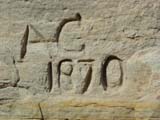
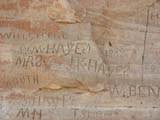
|
This was probably Alfred Giles, who was with
the Overland Telegraph Line exploring party under the leadership
of John
Ross in 1870 - 71.
William Hayes first came through this country
with his family in 1884, dam sinking and fencing for Thomas
Elder on nearby
Mt. Burrell (Maryvale).
He later returned with wagon loads of steel telegraph poles
to replace the wooden ones on the Old Telegraph Line.
He then took up land at Deep Well, south of Alice Springs.
Their descendants still own cattle properties in the area.
The Hayes family
remains a prominent Central Australian family. |
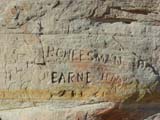
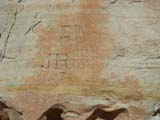
|
AP Cheeseman was a haulage contractor for the government
parties on the Overland Telegraph Line construction.
Gilbert McMinn, who was with Ross's expedition, mentions this in his diary in
October 1871.
Williame Hearne was also with Ross and Giles in 1870 - 71.
John Ross led the exploring party for the Overland Telegraph
Line constructed in 1870 - 71.
He was one of the first white people to visit Chambers Pillar since John MacDouall
Stuart, who recorded his visit in his diary but did not leave his name. |
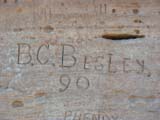
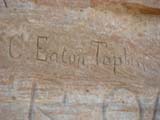
In 1890, H.G. Swan., B.C. Besley and C. Eaton Taplan investigated
the relationships between Aboriginal and white people in central
Australia.
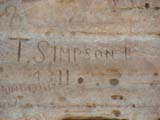
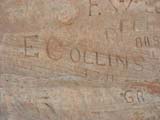
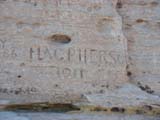
Scientists also took great interest in the area.
Basedow, Simpson, Collins and MacPherson were members of an early scientific
expedition.
|